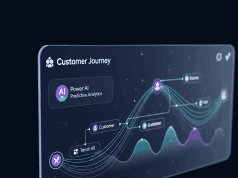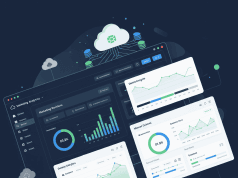In an age where data is often heralded as the new oil, businesses are increasingly looking for innovative ways to leverage this resource. Among the most groundbreaking techniques is predictive analytics, a multifaceted approach that analyzes historical data to forecast future outcomes. This technology is reshaping marketing strategies, enabling brands to tailor their offerings, enhance customer experiences, and ultimately drive profitability.
Understanding Predictive Analytics
Predictive analytics involves using statistical algorithms and machine learning techniques to identify the likelihood of future outcomes based on historical data. It encompasses a variety of disciplines, including statistics, data mining, and artificial intelligence. By employing these methodologies, businesses can derive insights that inform their marketing strategies with remarkable accuracy.
The Rise of Data-Driven Decisions
Historically, marketing initiatives relied heavily on intuition and broad demographic categories. However, with the rise of big data, companies can now make data-driven decisions that are both precise and personalized. Predictive analytics allows marketers to segment audiences, identify trends, and forecast consumer behavior.
1. Personalization at Scale
One of the most significant advantages of predictive analytics is its ability to facilitate personalized marketing. Organizations can analyze previous interactions to create tailored marketing campaigns that resonate with individual consumers. For instance:
- Customer Targeting: Predictive models can analyze data points such as purchase history, browsing behavior, and even social media engagement to identify the segments most likely to convert.
- Content Tailoring: By understanding what type of content appeals to different audience segments, brands can create personalized messages that increase engagement and satisfaction.
2. Optimized Marketing Spend
Gone are the days of blind spending on marketing efforts with uncertain returns. Predictive analytics provides invaluable insights into which channels and campaigns are likely to deliver the highest ROI.
- Budget Allocation: Marketers can distribute resources more effectively by predicting which marketing activities will yield the greatest results. This minimizes waste and maximizes profitability.
- Campaign Performance Tracking: Ongoing analysis allows marketers to tweak and optimize campaigns in real time, responding to emerging trends and customer behaviors.
3. Enhanced Customer Retention
Acquiring new customers is typically more expensive than retaining existing ones. Predictive analytics can help businesses identify churn risks and implement strategies to improve customer loyalty.
- Churn Prediction: By analyzing customer data, businesses can pinpoint signals indicating a customer might disengage. This insight enables proactive measures to retain valued customers, such as personalized outreach or loyalty rewards.
- Customer Feedback Loops: Continuous monitoring of customer interactions provides businesses with insights to adjust their offerings, enhancing satisfaction and fostering long-term relationships.
4. Improved Product Development
Predictive analytics isn’t limited to marketing; it extends to product development as well. By analyzing market trends and consumer preferences, businesses can develop products that meet customer needs more effectively.
- Trend Analysis: By leveraging predictive models, companies can forecast emerging trends and shift their development focus accordingly, ensuring they remain competitive in the market.
- Demand Forecasting: Understanding what products are likely to be successful allows organizations to manage inventory better, reducing costs and increasing sales.
Challenges and Considerations
While the benefits of predictive analytics are clear, businesses must navigate several challenges to reap its rewards:
- Data Quality: The accuracy of predictions relies heavily on the quality of the data. Organizations need robust systems to collect and manage data effectively.
- Integration Issues: For companies with legacy systems, integrating predictive analytics can be complex and costly.
- Privacy Concerns: As businesses gather more data, they must be vigilant about consumer privacy and data protection regulations.
Conclusion
Predictive analytics is not just a trend; it’s a transformative force reshaping how businesses approach marketing strategies. By leveraging data to anticipate customer behavior, companies can personalize experiences, optimize spending, improve retention, and drive product innovation. As the digital landscape continues to evolve, organizations that adopt predictive analytics will find themselves ahead of the curve, unlocking new opportunities for success in an increasingly competitive marketplace.
In this data-driven future, predictive analytics represents the key to unlocking insights that can significantly elevate marketing effectiveness, ultimately leading to enhanced customer satisfaction and increased profitability.









